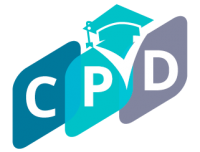Introduction
In the enchanting world of children’s literature, the concepts of “windows” and “mirrors” serve as powerful metaphors to describe the transformative impact of stories on young readers. As an education consultancy company dedicated to fostering inclusive learning experiences, we delve into the significance of storybooks as windows and mirrors, exploring how representation in children’s literature plays a pivotal role in shaping identity, empathy, and a sense of belonging.
- Windows into Other Worlds: Fostering Empathy and Understanding
Storybooks act as windows that open young readers to worlds beyond their immediate experiences. When children encounter characters from diverse backgrounds, cultures, and perspectives, they gain insights into lives different from their own. This exposure fosters empathy, broadening their understanding of the rich tapestry of human experiences.
Recognizing the power of storybooks as windows prompts educators and parents to curate diverse collections that showcase characters from various cultures, ethnicities, and backgrounds. These windows become portals to a more inclusive and interconnected understanding of the world.
- Mirrors Reflecting Personal Identities: Affirming a Sense of Self
On the other hand, storybooks also function as mirrors, reflecting a child’s own identity and experiences. When young readers see characters who share similar backgrounds, identities, or life circumstances, they find affirmation and validation. Mirrors in literature play a crucial role in reinforcing a child’s sense of self-worth and belonging.
Understanding the role of storybooks as mirrors encourages educators and parents to include narratives that resonate with the diverse identities of their young readers. These mirrors become powerful tools for cultivating a positive self-image and reinforcing the idea that every child’s story is worth telling.
- Cultural Representation: Bridging Gaps and Celebrating Diversity
Cultural representation in storybooks is particularly influential in serving as both windows and mirrors. When children encounter characters immersed in their own cultural heritage, they gain a deeper understanding and appreciation of their roots. Simultaneously, exposure to characters from different cultures fosters an appreciation for diversity and promotes a sense of global citizenship.
Acknowledging the impact of cultural representation prompts educators and parents to intentionally select storybooks that celebrate a range of cultural identities. These narratives become bridges that connect children to their own heritage and build pathways toward cross-cultural understanding.
- Breaking Stereotypes: Challenging Assumptions and Biases
Storybooks possess the transformative ability to challenge stereotypes and biases that may exist in society. When characters defy traditional gender roles, challenge racial stereotypes, or break free from limiting expectations, young readers are presented with narratives that encourage critical thinking and question societal norms.
Understanding the role of storybooks in breaking stereotypes prompts educators and parents to seek out narratives that offer counter-narratives to prevailing biases. These stories become catalysts for discussions that promote inclusivity, equality, and a broader understanding of human potential.
- Identity Exploration: Navigating Complexities with Characters
The journey of identity exploration is a central theme in many children’s stories. Characters grapple with questions of identity, belonging, and self-discovery, providing young readers with a roadmap for navigating their own complexities. By witnessing characters confront and overcome challenges related to identity, children gain insights into their own journeys of self-discovery.
Acknowledging the role of storybooks in identity exploration prompts educators and parents to provide space for discussions about characters’ experiences. These conversations become opportunities for children to articulate their own thoughts and feelings, fostering a sense of agency in shaping their identities.
- Building Empowerment: Representation as a Source of Strength
When children see themselves represented positively in literature, it becomes a source of empowerment. Characters who overcome adversity, embrace their uniqueness, and contribute meaningfully to their fictional worlds send powerful messages to young readers. This representation becomes a wellspring of inspiration, instilling confidence and a belief in one’s ability to overcome challenges.
Understanding the role of representation as a source of strength prompts educators and parents to prioritize narratives that depict characters as resilient, capable, and diverse. These stories become affirmations of children’s potential and contribute to the development of a strong sense of self.
Conclusion
As we celebrate our one-year milestone as an education consultancy company, let us champion the transformative role of storybooks as windows and mirrors in shaping the identities and perspectives of young readers. The inclusion of diverse voices, cultures, and experiences in children’s literature is not just a literary choice; it is a powerful affirmation of the inherent worth and potential of every child. By embracing storybooks as windows and mirrors, we cultivate empathy, challenge biases, celebrate diversity, and empower children to navigate the rich tapestry of their own identities. In the pages of storybooks, children discover not only the vastness of the world but also the depth of their own unique stories, fostering a love for literature that transcends pages and shapes the way they view themselves and others.
